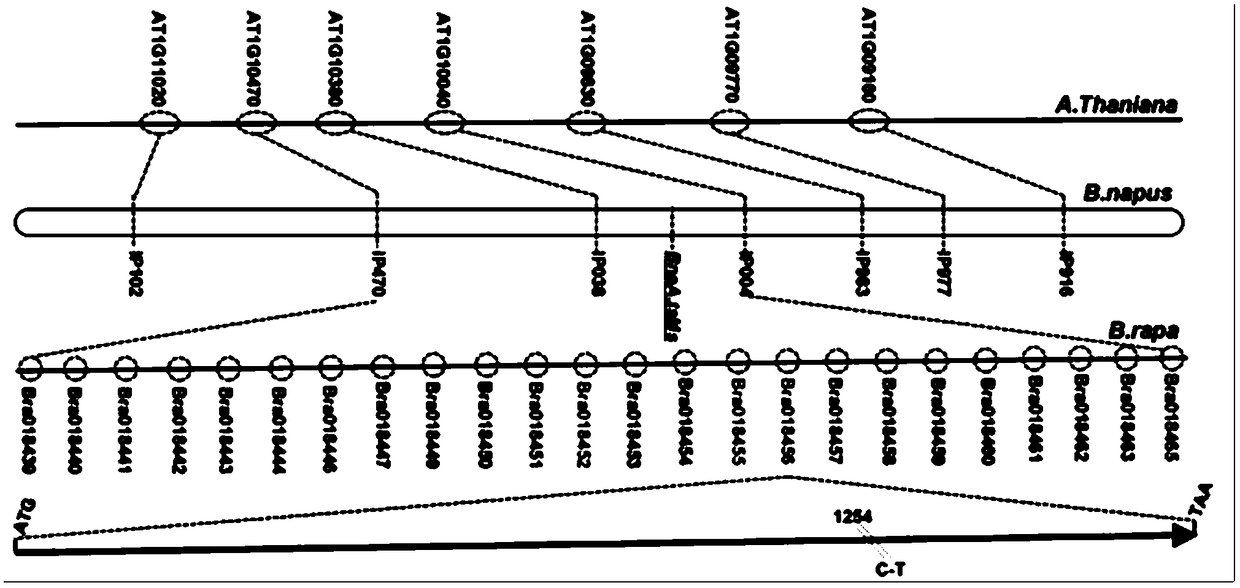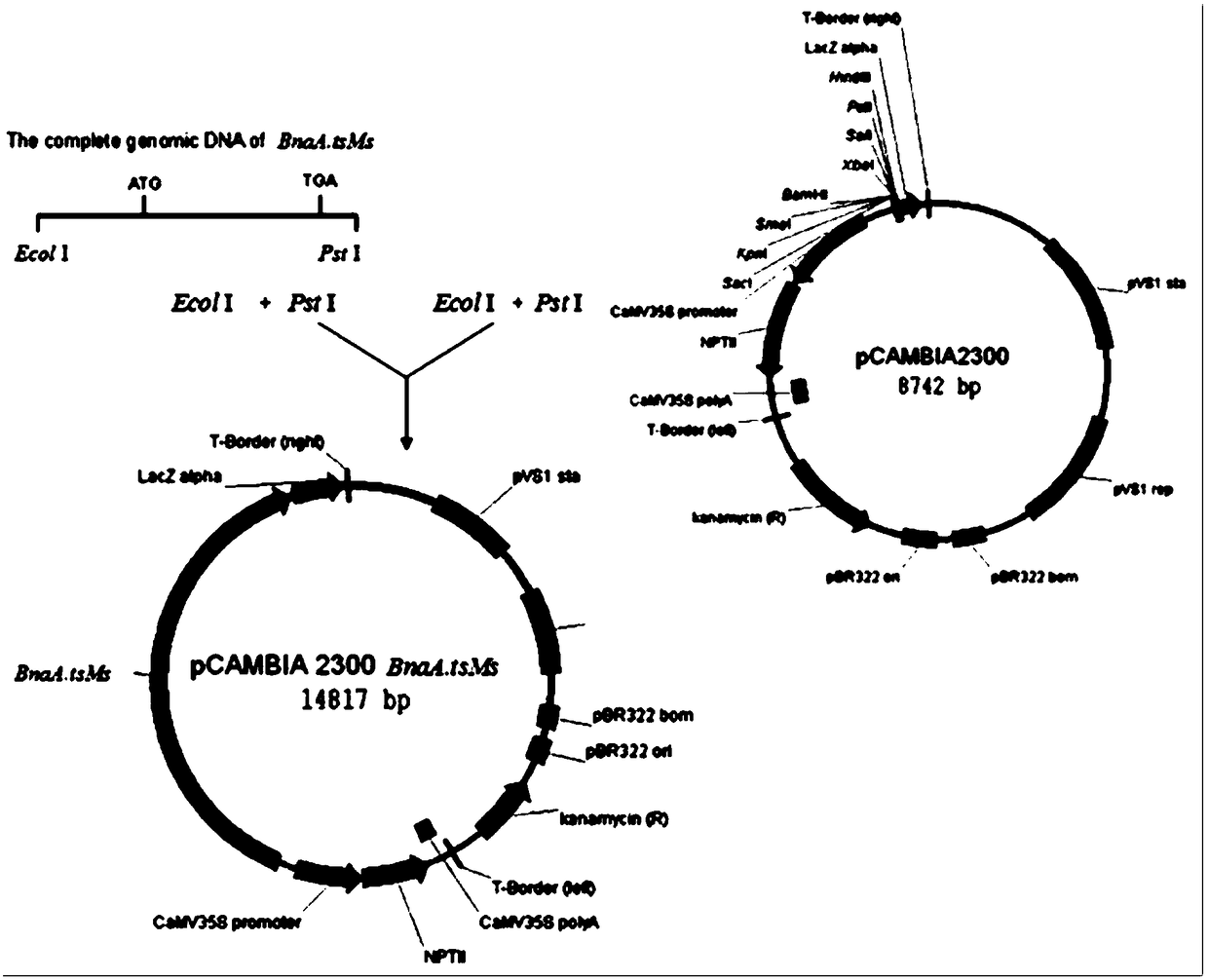Brassica napus thermosensitive dominant nuclear sterile gene bnaatsms
A cabbage-type rapeseed, temperature-sensitive technology, applied in genetic engineering, plant genetic improvement, peptide source, etc., can solve problems such as lag
- Summary
- Abstract
- Description
- Claims
- Application Information
AI Technical Summary
Problems solved by technology
Method used
Image
Examples
Embodiment 1
[0033] 1. Example 1: Analysis of Genetic Law of Brassica napus Thermosensitive Nuclear Dominant Sterile Material
[0034] 1. Experimental materials
[0035] The material used in this experiment is the two-type line TE5AB of Brassica napus thermosensitive nucleus dominant (12) , the sterile strain is called TE5A, and the fertile strain is called TE5B. Rapeseed napus temperature-sensitive nuclear dominant two-type line TE5AB Material source: Two sterile individual plants were obtained from the Brassica napus inbred line TE5, and the sterile individual plants were crossed with the Brassica napus inbred line TE1, and the first generation F 1 F 2 , and use TE1 as the recurrent parent to backcross to obtain a near-isogenic line.
[0036] 2. Inheritance of thermosensitive nuclear dominant sterile materials
[0037] Using classical genetic methods, the reciprocal cross F of temperature-sensitive sterile material TE5A and fertile normal Brassica napus TE1 1 , F 2 and backcross se...
Embodiment 2
[0040] 2. Example 2: Construction of a genetic map containing the BnaAtsMs segment of the temperature-sensitive dominant nuclear sterile gene BnaAtsMs in Brassica napus
[0041] 1. Experimental materials
[0042] The mapping population TE5AB of the temperature-sensitive dominant nuclear sterile gene is a near-isogenic line population constructed by continuous backcrossing with its corresponding parent TE1 (12). Sowed in Xining in the spring of 2012, and extracted DNA from 700 sterile individual plants derived from the near-isogenic line of TE5AB in the summer of 2012 (13) , for fine mapping of genes.
[0043] 2. Fine mapping of temperature-sensitive dominant nuclear sterile gene BnaAtsMs in Brassica napus
[0044] According to the results of preliminary mapping, the gene is located between the SCAR (Sequence characterized amplified region) markers SC1 and SC10 of the rape N08 linkage group. That is, the BnaAtsMs site is located between SC1 and SC10.
[0045] The nucleotid...
Embodiment 3
[0055] 3. Example 3: Isolation and functional verification of the temperature-sensitive dominant nuclear sterile gene BnaAtsMs in Brassica napus
[0056] 1. Determination of BnaAtsMs candidate genes
[0057] In this example, the Blast software in the model organisms Arabidopsis and Chinese cabbage genome websites (http: / / www.arabidopsis.org / blast, http: / / brassicadb.org / brad / index.php) was used to detect molecular markers IP004 and Between IP470, including BnaAtsMs or its homologous Bra.tsMs, sequence analysis from rapeseed or Chinese cabbage showed that there were six genes Bra018441, Bra018443, Bra018446, Bra018449, Bra018451 and Bra018457 that may be related to stamen development in this segment, And three cabbage-specific genes Bra018452, Bra018455 and Bra018456. The transcription start sites of these nine genes were determined by Blast software analysis in the Chinese cabbage genome website (http: / / brassicadb.org / brad / index.php), and the cDNAs of TE5A and TE5 were used as...
PUM
 Login to View More
Login to View More Abstract
Description
Claims
Application Information
 Login to View More
Login to View More - R&D
- Intellectual Property
- Life Sciences
- Materials
- Tech Scout
- Unparalleled Data Quality
- Higher Quality Content
- 60% Fewer Hallucinations
Browse by: Latest US Patents, China's latest patents, Technical Efficacy Thesaurus, Application Domain, Technology Topic, Popular Technical Reports.
© 2025 PatSnap. All rights reserved.Legal|Privacy policy|Modern Slavery Act Transparency Statement|Sitemap|About US| Contact US: help@patsnap.com



